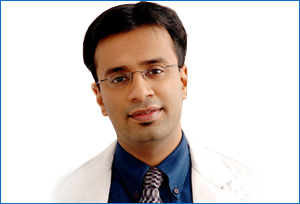Le Fort Fractures
What is it?
The Le Fort fractures are named after the French surgeon Rene Le Fort. He discovered the unique fracture patterns by examining crush injuries in cadavers.
A Le Fort fracture of the skull is a panfacial fracture that occurs in the mid facial region. This includes the maxillary bone and surrounding structures in the horizontal, pyramidal or transverse direction. Le Fort fractures are identified by the characteristic pterygomaxillary separation – the fraction between the pterygoind plates, the horseshoe shaped bony protruberances that originate at the inferior margin of the maxilla and maxillary sinuses.
The stability of the midface region depends on the continuity of this structure. The surgery procedures for Le Fort fractures of trauma victims requires fixation to a horizontal bar of the frontal bone.
The Le Fort fractures are the types that involve separation of all or part of the midface from the skull base. The pterygoid plates (they connect the midface to sphenoid bone dorsally) are involved in the Le Fort fractures. They account to around 10-20% of all facial fractures. Motor vehicle accidents are the main cause of the Le Fort fractures.
Classification of Le Fort fractures
There are 3 major types of Le Fort fractures based on the affected area. While the Le Fort type I fracture is isolated to the lower face, the Le Fort type I and Le Fort type II fractures are associated with cribriform plate disruption and CSF rhinorrhea.
Le Fort type I fractures
Le Fort I fractures also known as the floating palate might be the result of a force of injury directed on the lower part of the maxillary alveolar rim or upper dental row, downwards. The pterygoid plate and lateral bony margin of the nasal opening are involved in the Le Fort type I fracture. The medial and lateral buttresses (walls) of the maxillary sinus, the parts of the face just above the alveolar ridge of the upper dental row are involved.
This type of fracture is also called Guerin fracture.
The Le Fort type I fractures are stable transverse fractures separating body of maxilla from pterygoid plate and nasal septum. Only the hard palate and teeth move in this type.
Symptoms: The symptoms of this include slight swelling of the upper lip, mobility of teeth. The buccal sulcus beneath each zygomatic arch is has the ecchymosis is also affected. The Le FortI fracture is diagnosed only by grasping the maxillary teeth and applying a little firm pressure to feel the characteristic grate. The presence of the ecchymosis of the greater palatine vessels characterises the Guerin’s sign.
Le Fort type II fractures
Le Fort type II fracture (pyramidal) may occur due to a blow to the lower or mid maxilla. In addition to the pterygoid plate, the inferior orbital rim is involved. The fracture got its classification name as pyramidal due to the characteristic pyramid shape of the fracture when viewed from the front. The Le Fort type II fractures extend from the nasal bridge at or below the nasofrontal suture through the superior medial wall of the maxilla. The lacrimal bones (which contains the tear ducts) and inferior orbital floor (through or near the infraorbital foramen) are part of the infolateral dimension of this fracture.
The Le Fort type II fractures might be stable or unstable pyramidal fractures that occur through central maxilla and hard palate. In this type, the hard palate and nose move but eyes do not.
Symptoms: step deformity at infraorbital margin, mobile mid face, anesthesia or paresthesia of cheek.
Le Fort type III fracture
The Le Fort type III fracture (transverse) is also known as the craniofacial dissociation and is caused by impact to the nasal bridge or upper maxilla. These fractures involve the pterygoid plate (as in all Le Fort fractures) and the zygomatic arch or cheek bone. The Le Fort type III fractures begin at the nasofrontal and frontomaxillary sutures and extend along the medial wall of the orbit through the nasolacrimal groove and ethmoid air cells.
The fracture rarely reaches the optic canal because it is restricted by the sphenoid which is thickened posteriorly. The Le Fort type III fracture then continues along the orbital floor and infraorbital fissue, to the lateral orbital wall to the zygomaticofrontal junction and zygomatic arch. It then travels inside the nose through the perperndicular plate of the ethmoid air cells, and vomer (part of the nasal septum).
These are unstable fractures that show face deformity on lateral view. The Le Fort type III fractures occur through frontozygomatic sutures, orbit nose and ethmoids. The entire face shifts with just the optic nerve holding the globes in place.
Symptoms: tenderness and separation at frontozygomatic suture, lengthening of face, depression of ocular levels, hooding of eyes, gagging on the side of injury due to the tilting of an imaginary curved plane (occlusal plane) between the edges of the incisions and tips of the posterior teeth.
Surgical treatment
The surgeons take extraordinary care while performing the panfacial surgery to cure Le Fort fractures because lack of experience or poor methods could result in drastic, permanent disfiguration in and around the jaw area, making a face grotesque. The surgeons need to be specifically trained to handle the many layers of bones and muscles that might come in contact while performing this surgery.
Dr. Debraj Shome, facial plastic surgeon, has performed many of these panfacial surgeries with extremely satisfying outcomes, making sure that the treatment for the traumatic fractures give the much needed confidence to the patients.


